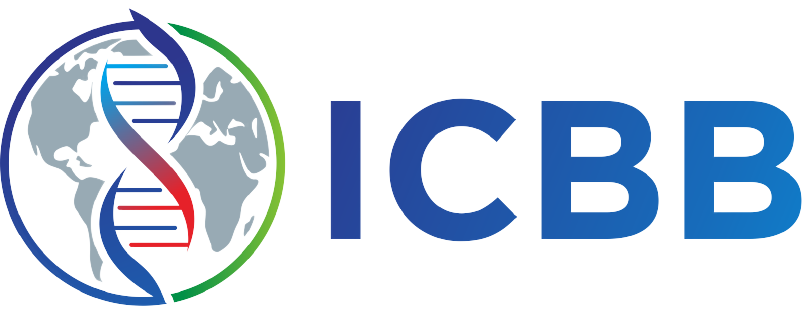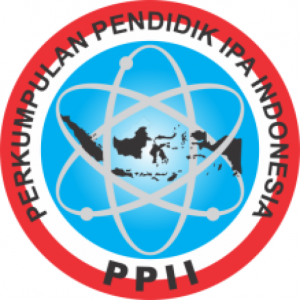Dextran Producing Bacteria: A Literatur Review
Authors
Vishtari Salsabilla , Dwi Hilda Putri , Linda Advinda , Afifatul Achyar , Ahmad WibisanaDOI:
10.29303/jbt.v25i1.8370Published:
2025-03-15Issue:
Vol. 25 No. 1 (2025): Januari - MaretKeywords:
Biomedical applications, dextran producing bacteria, dextransucrase, exopolysaccharides, fermentation optimization.Articles
Downloads
How to Cite
Downloads
Metrics
Abstract
This study aims to analyze dextran-producing bacteria, especially from the general Leuconostoc, Weissella, and Lactobacillus, which produce the enzyme dextransucrase for dextran synthesis. This research uses the Systematic Literature Review (SLR) method based on the PRISMA protocol, with data sources from various trusted scientific databases for the 2020–2024 period. The results of the study show that variations in dextran structure, such as molecular weight and degree of branching, are highly dependent on the bacterial strain and fermentation conditions. Optimization of production parameters, including pH, temperature and substrate concentration, can increase dextran production efficiency The conclusions of this study emphasize the need for a multidisciplinary approach to optimize the potential of dextran in industrial and biotechnology applications. Further research is recommended to explore new strains, optimize production processes, and diversify dextran applications.
References
A.E Zainal Hasan. (n.d.). Isolasi dan karakterisasi dekstransukrase dari isolasi bakteri batang tebu.
Ashfaq, A., Clochard, M. C., Coqueret, X., Dispenza, C., Driscoll, M. S., Ulański, P., & Al-Sheikhly, M. (2020). Polymerization reactions and modifications of polymers by ionizing radiation. Polymers, 12(12), 1–67.
Atomik, J. (2024). Selection Of Potential Bacteria Producing Hydrolitic Enzymes From Soil Samples At The Bukit. 9(2), 90–95.
Ceresa, C., Fracchia, L., Sansotera, A. C., De Rienzo, M. A. D., & Banat, I. M. (2023). Harnessing the Potential of Biosurfactants for Biomedical and Pharmaceutical Applications. Pharmaceutics, 15(8).
Diez-Ozaeta, I., Berasarte, I., Zeid, A. F., Fernández, M., Russo, P., López, P., Dueñas, M., & Mohedano, M. L. (2025). Functional characterization of the riboflavin-overproducing and dextran-producing Weissella cibaria BAL3C-5 C120T strain for the development of biofortified plant-based beverages. International Journal of Food Microbiology, 426(June 2024).
Diez-Ozaeta, I., Martín-Loarte, L., Mohedano, M. L., Tamame, M., Ruiz-Masó, J. Á., del Solar, G., Dueñas, M. T., & López, P. (2023). A methodology for the selection and characterization of riboflavin-overproducing Weissella cibaria strains after treatment with roseoflavin. Frontiers in Microbiology, 14(April), 1–21.
Edis, K. K., İspirli, H., Yilmaz, M. T., & Dertli, E. (2024). LiquoriLactobacillus hordei SK6 and LiquoriLactobacillus mali SK26 from Traditional Water Kefir Produce Dextrans with Technological Roles. Applied Biochemistry and Biotechnology.
Fajariah, A. R., Aprilia, A., Faizal, F., & Safriani, L. (2022). Pengaruh Viskositas Larutan Terhadap Karakteristik Tio2 Nanofiber Yang Dibuat Menggunakan Teknik Elektrospinning. Jurnal Material Dan Energi Indonesia, 12(01), 01.
Faridah, H. D., & Sari, S. K. (2019). Utilization of Microorganism on the Development of Halal Food Based on Biotechnology. Journal of Halal Product and Research, 2(1), 33.
Gościniak, A., Lainé, E., & Cielecka-Piontek, J. (2024). How Do Cyclodextrins and Dextrans Affect the Gut Microbiome? Review of Prebiotic Activity. Molecules, 29(22).
Hernández-Alcántara, A. M., Chiva, R., Mohedano, M. L., Russo, P., Ruiz-Masó, J. Á., del Solar, G., Spano, G., Tamame, M., & López, P. (2022). Weissella cibaria riboflavin-overproducing and dextran-producing strains useful for the development of functional bread. Frontiers in Nutrition, 9(October), 1–17.
Khalikova, E., Susi, P., & Korpela, T. (2020). Microbial Dextran-Hydrolyzing Enzymes : Fundamentals and Applications. 69(2), 306–325.
Nikinmaa, M., Kajala, I., Liu, X., Nordlund, E., & Sozer, N. (2020). The role of rye bran acidification and in situ dextran formation on structure and texture of high fibre extrudates. Food Research International, 137(June), 109438.
Pasaribu, F.L., E.Yenie, S. R. M. (2017). Pengaruh Konsentrasi Substrat Dan Waktu Fermentasi Pada Pemanfaatan Limbah Kulit Nenas (Ananas Comosus L. Merr) Untuk Produksi Enzim Selulase. Jurnal Chemical Engineering.
Priadi, G., Setiyoningrum, F., Afiati, F., Irzaldi, R., & Lisdiyanti, P. (2020). Studi in Vitro Bakteri Asam Laktat Kandidat Probiotik Dari Makanan Fermentasi Indonesia. Jurnal Teknologi Dan Industri Pangan, 31(1), 21–28.
Pu, Y., Peng, K., Sun, J., Meng, Q., Zhao, F., & Sang, Y. (2024). Synthesis of dextran of different molecular weights by recombinant dextransucrase DsrB. International Journal of Biological Macromolecules, 277(Pt 1), 134094.
Santoso, H. (2020). Pengaruh Substitusi Terhadap Sukrosa Murni Oleh Nira Tebu Sebagai Sumber Karbon pada Fermentasi Produksi Dekstran ( Effect of Substituting Pure Sucrose by Sugarcane Juice as Carbon Source on the Fermentation of Dextran Production ). 8(2), 193–198.
Sarwat, F., Qader, S. A. U., Aman, A., & Ahmed, N. (2021). Production & characterization of a unique dextran from an indigenous Leuconostoc mesenteroides CMG713. International Journal of Biological Sciences, 4(6), 379–386.
Tripathi, N. K., & Shrivastava, A. (2019). Recent Developments in Bioprocessing of Recombinant Proteins: Expression Hosts and Process Development. Frontiers in Bioengineering and Biotechnology, 7(December).
Valls-Chivas, Á., Gómez, J., Garcia-Peiro, J. I., Hornos, F., & Hueso, J. L. (2023). Enzyme–Iron Oxide Nanoassemblies: A Review of Immobilization and Biocatalytic Applications. Catalysts, 13(6).
Wang, S., Fontana, F., Shahbazi, M. A., & Santos, H. A. (2021). Acetalated dextran based nano- And microparticles: synthesis, fabrication, and therapeutic applications. Chemical Communications, 57(35), 4212–4229.
Wang, S., Tang, Y., Kou, X., Chen, J., & Edgar, K. J. (2024). Dextran Macroinitiator for Synthesis of Polysaccharide-b-Polypeptide Block Copolymers via NCA Ring-Opening Polymerization. Biomacromolecules, 25(5), 3122–3130.
Wang, Y., Maina, N. H., Coda, R., & Katina, K. (2021). Challenges and opportunities for wheat alternative grains in breadmaking: Ex-situ- versus in-situ-produced dextran. Trends in Food Science and Technology, 113(January), 232–244.
Wasiak, I., Kulikowska, A., Janczewska, M., Michalak, M., Cymerman, I. A., Nagalski, A., Kallinger, P., Szymanski, W. W., & Ciach, T. (2016). Dextran Nanoparticle Synthesis and Properties. PLOS ONE, 11(1), e0146237.
Yudono, B. (2019). Spektrometri. In Sustainability (Switzerland) (Vol. 11, Issue 1).
Zielińska, A., Szalata, M., Gorczyński, A., Karczewski, J., Eder, P., Severino, P., Cabeda, J. M., Souto, E. B., & Słomski, R. (2021). Cancer nanopharmaceuticals: Physicochemical characterization and in vitro/in vivo applications. Cancers, 13(8).
License
Copyright (c) 2025 Vishtari Salsabilla, Dwi Hilda Putri, Linda Advinda, Afifatul Achyar, Ahmad Wibisana

This work is licensed under a Creative Commons Attribution 4.0 International License.

Jurnal Biologi Tropis is licensed under a Creative Commons Attribution 4.0 International License.
The copyright of the received article shall be assigned to the author as the owner of the paper. The intended copyright includes the right to publish the article in various forms (including reprints). The journal maintains the publishing rights to the published articles.
Authors are permitted to disseminate published articles by sharing the link/DOI of the article at the journal. Authors are allowed to use their articles for any legal purposes deemed necessary without written permission from the journal with an acknowledgment of initial publication to this journal.


























